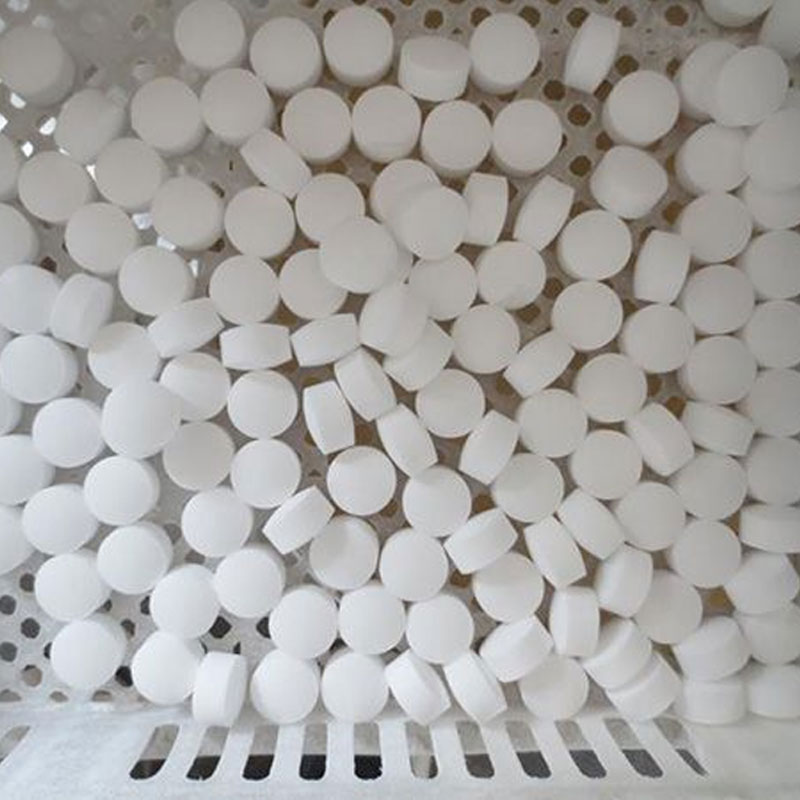Compared with other chemical methods for reducing the hardness of raw water, the effect of adding softening salt to treat raw water is very good. The main component in this process is sodium chloride in salt, which can effectively replace calcium and magnesium ions adsorbed on the resin. We mainly achieve the purpose of softening water quality through physical replacement, and no chemical residues and harmful odors will be produced in the process. Therefore, the equipment used in this method is also called sodium ion exchanger, and the softener cannot be separated from the resin, and the clean resin cannot be separated from the addition of salt. Therefore, the absorption capacity of the resin for calcium and magnesium ions in water is reduced by physical action. Make the water quality cleaner and clearer, and reduce scale and impurities in the water supply pipes, so it can be seen that softening salt is a new type of energy-saving water treatment material.
There are many types of table salt, but many people do not know the existence of softening salt. We can understand it through its characteristics. Softening salt is also called ion exchange resin regeneration agent. Its main chemical component is sodium chloride, its content is greater than 99.5%, and its shape is spherical agent.
Characteristics of softening salt
1. The purity of softening salt is as high as 99.5%.
2. Add the corresponding additives, and the iron removal capacity is 6 times that of ordinary table salt, which can effectively protect the equipment.
3. Softening salt can remove impurities in water in a double way, and its softening capacity is twice that of other salts. It can improve the efficiency of the water softener, reduce maintenance, and extend the service life of the water softener.

So how can we be sure that what we buy is softening salt?
(1) Observe its appearance
1. Observe the appearance of the product with the naked eye to see if it is snow-white in color, fine in structure, full in grains, and has no obvious residue in the particles.
2. Use physical methods such as breaking and pressing by hand to test whether the softening salt is not easy to break.
(2) Dissolve the softening salt
Put 2 pieces of softening salt in one bottle and 10 pieces of softening salt in another bottle. After about 4 hours, observe the melting of the softening salt tablets in the two bottles to see if the softening salt is dissolved and whether the softening salt solution is clear. If the softening salt tablets in a bottle with two softening salt tablets dissolve and the water solution is clear, it means that the product is clean and free of impurities; if there are undissolved substances at the bottom of the bottle and the water is turbid, it means that there are too many product residues. In a bottle with 10 softening salt tablets, if some fine salt tablets remain at the bottom of the bottle and will not dissolve again, it means that the product is of high purity and the salt is solid. If some loose salt remains at the bottom of the bottle and will not dissolve again, it means that the salt quality is poor.
